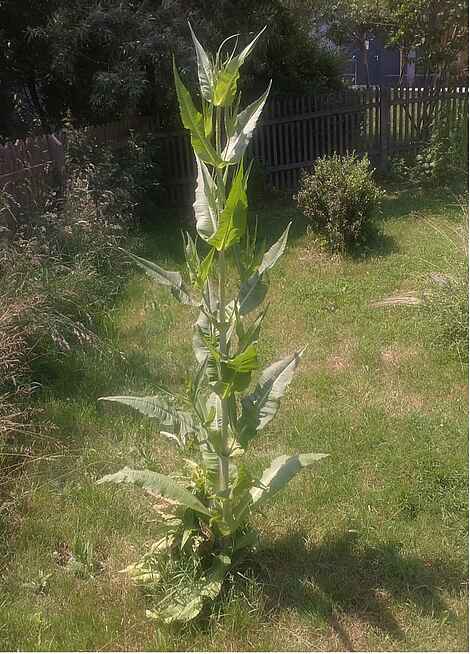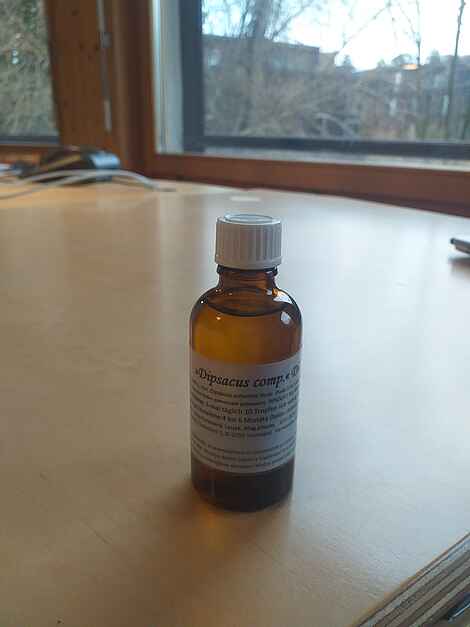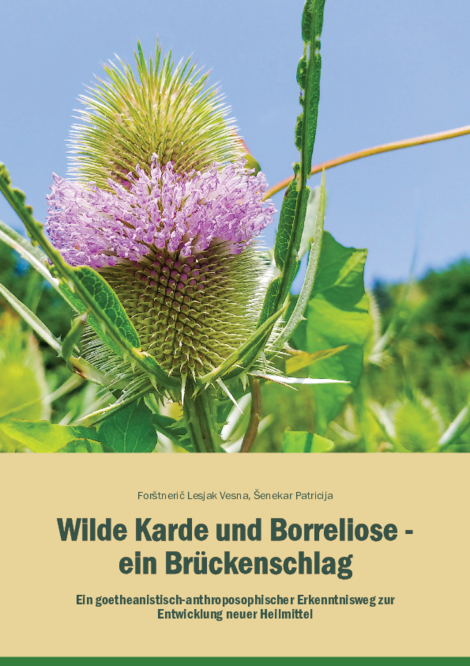Vesna Forštnerič Lesjak
In addition to taking up co-leadership of the Natural Science Section with Matthias Rang, starting in January 2023, I also completed a long-standing research project. Along with Patricija Šenekar, my student in the part-time training program in Goetheanist-anthroposophical natural science (www.anthrobotanik.eu), I completed this 7-year project with a book publication at the end of 2023.[1] The project is a precursor to three extended projects, which were briefly described in a preview of the next seven years for the Natural Science Section, in “Insights”[2], the booklet published by the Goetheanum Leadership.
The first project, “Goetheanism as a Path of Training” (No. 12 in the booklet), is about the extended training initiative, in which each student carries out his/her own research project and is individually supervised by a main mentor. Patricija Šenekar was a student in the Teasel project, and, as her main mentor, I introduced her to the Goethean approach to studying the plant world. Some aspects of the project “Picture-Forming Methods and Their Application” (No. 11) can also be found in this project, because I introduced her to the rising picture method: we accompanied three Teasel species and their organ development throughout the year using rising pictures, which gave us important insights into the processes of these plants. This was also important for the conceptualization of a new remedy, which leads us to the third project in the booklet (No. 9) “Understanding Medicinal Plants–From Plant to Medicine.”
The botanical part of the Teasel project was thus transferred to medical research. Initially, I investigated the historical background of Lyme borreliosis (Lyme disease) and compared the disease with syphilis, which has a related bacterial causative agent: Treponema pallidum is also a bacterium from the spirochete group. I then looked into the diagnosis and conventional treatment of the disease and the pathogen (Borrelia sensu lato) and studied conventional phytochemical, pharmacological, botanical, and medical research on Teasel. In discussions with anthroposophical doctors, I have tried to work out the gestures of an unhealed Lyme disease with a chronic course. The plant gestures of Wild Teasel and its special position within its family became increasingly clear to us. We also found the gestural language of Wild Teasel in the processual course of Lyme disease. The plant stood before us as an image of this disease process. However, it also showed additional characteristics and gestures that are missing in those chronically suffering from Lyme disease. These are its clear “I-gestures”, which are expressed in its tall and very straight form, in its strong, unmistakable presence on the site, and in the order and symmetry of its above-ground parts. In this way, it also brings with it the healing potential, “the remedy” for the illness.
This was followed by the conceptualization of a new remedy where we intended to imitate all stages in the course of the disease, so that the preparation could address patients at any stage of the disease. So, we harvested three parts of the plant at three different stages of development, processed them using certain appropriate pharmaceutical processes, and potentized them together in the last three stages. This is how the new preparation “Dipsacus comp.” was created.
As Lyme borreliosis continues to spread, there is a great need from patients and a strong interest from doctors for this sort of remedy. So, for the last part of the research in the book, we contacted the infectious disease specialist Dr Šibanc from Slovenia, who headed the infectiology department of the Celje Hospital (SI) and at the same time the Association for Lyme Disease Patients of Slovenia. He was willing to collaborate with us, and, using an anonymous questionnaire, we were able to ask his patients and the members of this association about the course of the infection, the disease, diagnosis, and treatment, as well as many other topics, in order to gain a better understanding and additional insights into the disease. The doctor was prepared to use our preparation on some patients with unequivocal diagnoses, especially in difficult, long-term, chronic cases where all conventional medical options had been exhausted. These patients kept a diary and had their antibodies analyzed – both before starting to take the Dipsacus comp. preparation and at the end of the treatment – in addition to other tests. Two such patient stories are presented in longer form at the end of the book.
[1] The book "Wilde Karde und Borreliose – Ein Brückenschlag"can be ordered here: https://science.goetheanum.org/forschung/aktuelle-buecher
[2] Insights: Current and Future Research Projects of the Sections of the School of Spiritual Science. The brochure is available athttps://goetheanum.ch/de/nachrichten/einblicke-forschungsvorhaben-der-sektionen.
Or via Bank Transfer:
| CHF | EUR | |
| Allgemeine Anthroposophische Gesellschaft Postfach, 4143 Dornach/Schweiz Raiffeisenbank Dornach, CH–4143 Dornach BIC: RAIFCH22 IBAN: CH54 8080 8001 1975 4658 2 ⇨ Payment Purpose: KST 1122 | Allgemeine Anthroposophische Gesellschaft Postfach, 4143 Dornach/Schweiz GLS Gemeinschaftsbank eG, DE-44708 Bochum BIC: GENODEM1GLS IBAN: DE53 4306 0967 0000 9881 00 ⇨ Payment Purpose: KST 1122 |


